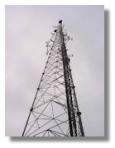Lee Harvey Oswald robbed my parents of their youth.
In a similar way, 9/11 and the destruction of the World Trade Centers may have robbed the rest of us (even those of us now in our 60s) of our youth.
When Oswald killed John F. Kennedy, he also killed – or at least damaged – the “youthful outlook” of the “Greatest Generation” – those who had survived the Great Depression and put their “youth” on hold to fight World War II. That generation – which included my parents – came back to peacetime, after WWII, and immediately married, had kids (lots of kids – the Baby Boomers) and got engaged in work and business. This generation saw Kennedy as a hero. He was, indeed, a bonafide war hero from PT-109. But he also had an eloquence and a youthful outlook on the world symbolized by his goal to put a man on the moon and his speeches including “ask not what you can do for your country …” and “the torch has been passed to a new generation of Americans”.
Oswald killed all that.
And afterward, of course, my own generation would not “trust anyone over 30”; the nation became bogged down in the Vietnam War; and my parents became “old fogies”. Bill Flanagan on CBS Sunday Morning eloquently described the disillusionment which followed November 22, 1963.
Something similar occurred, I fear, after September 11, 2013. For over 230 years, the United States survived on isolationism. We were separated from Europe and Asia by vast oceans as well as centuries in time. The United States was the “young democracy” on the globe. Sure, we lived in fear of nuclear Armageddon during the Cold War. But “bombs dropping invisibly from the sky” is an abstract concept. And, of course, that nuclear war never happened.
September 11, 2001, changed all that.
The war came to our shores.
Americans died – by the thousands – in Manhattan.
And, I think, to a great extent, the “youthful outlook” of the generations who remember 9/11 died also.
Now we have a National Security Agency which tracks our phone calls and our social media and probably tracks our email and web browsing. We’ve built a giant security apparatus worthy of George Orwell’s 1984. Our drones strike at people around the world. We fear the Chinese have completely cyber-infiltrated our government systems and private businesses. Every time we go through a TSA line at an airport we are personally reminded that terrorists live among us. We’ve wasted trillions of dollars and tens of thousands of lives (including the lives of the dismembered) on foreign wars in Afghanistan and Iraq. Every month another mass-shooting born of mental illness and despair seems to occur. And we are constantly reminded that our passwords are not secure, our financial information is not secure, and our very identities may be stolen.
I have great cause for hope, as well. There’s a whole generation growing up now who do NOT remember 9/11. The wars are winding down (although the debt they left us has not). We’ve got a vigorous non-profit sector of hackers (in the good sense of the term) who are building applications from open source and demanding open government data. A whole set of technologies is sprouting which will enrich our lives: network-connected glasses, autonomous vehicles, tablet and smartphone computers, and other wonders yet to be unveiled.
Lee Harvey Oswald robbed a generation of its youth. 9/11 robbed more generations of our youth. Can our next generation perhaps live out its dreams?














